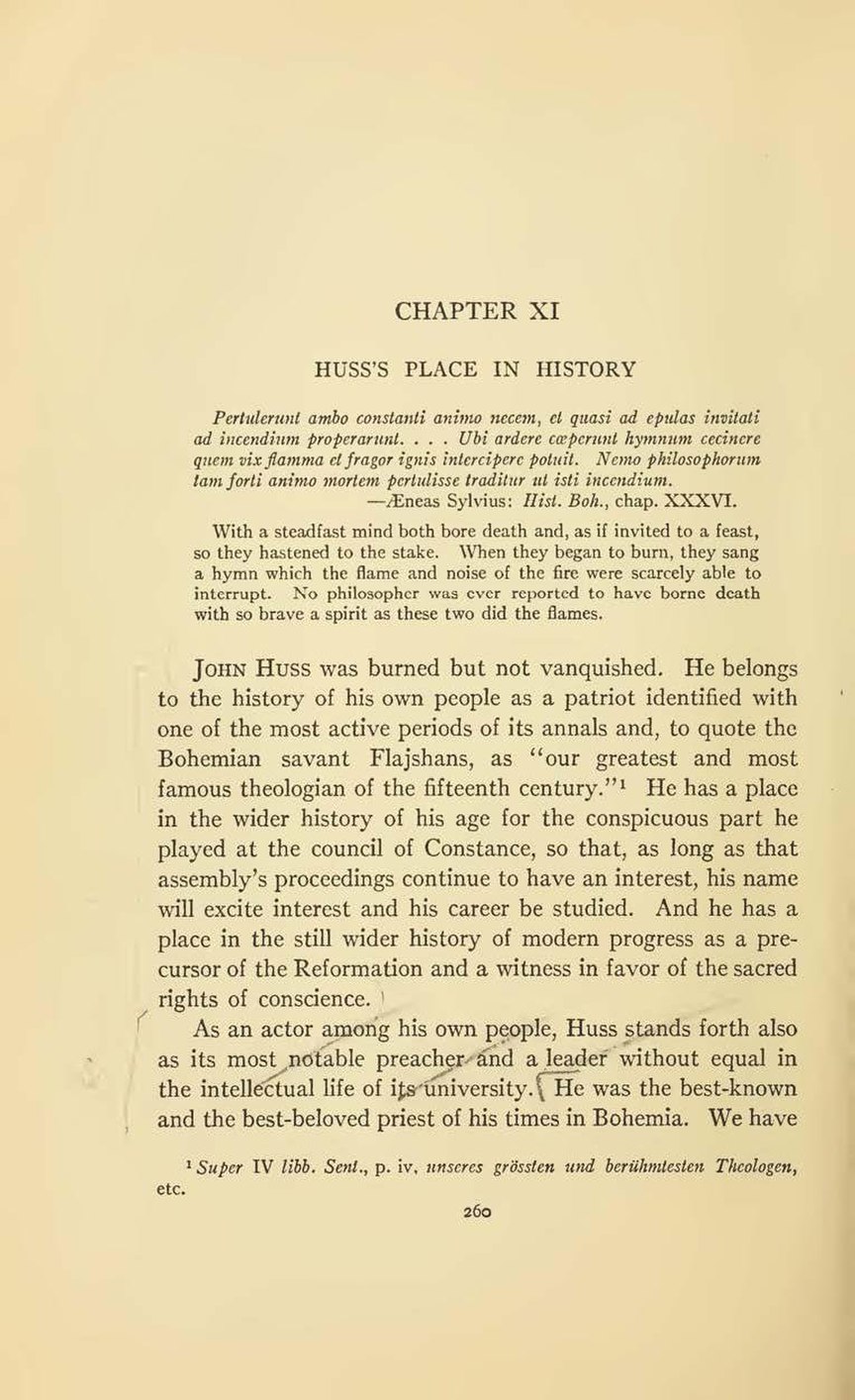CHAPTER XI
HUSS’S PLACE IN HISTORY
Pertulerunt ambo constanti animo necem, et quasi ad epulas invitati ad incendium properarunt. . . . Ubi ardere cœperunt hymnum cecinere quem vix flamma e fragor ignis intercipere potuit. Nemo philosophorum tam forti animo mortem pertulisse traditur ut isti incendium.
With a steadfast mind both bore death and, as if invited to a feast, so they hastened to the stake. When they began to burn, they sang a hymn which the fame and noise of the fire were scarcely able to interrupt. No philosopher was ever reported to have borne death with so brave a spirit as these two did the flames.
John Huss was burned but not vanquished. He belongs to the history of his own people as a patriot identified with one of the most active periods of its annals and, to quote the Bohemian savant Flajshans, as “our greatest and most famous theologian of the fifteenth century.”[1] He has a place in the wider history of his age for the conspicuous part he played at the council of Constance, so that, as long as that assembly’s proceedings continue to have an interest, his name will excite interest and his career be studied. And he has a place in the still wider history of modern progress as a precursor of the Reformation and a witness in favor of the sacred rights of conscience.
As an actor among his own people, Huss stands forth also as its most notable preacher and a leader without equal in the intellectual life of its university. He was the best-known and the best-beloved priest of his times in Bohemia. We have
- ↑ Super IV libb. Sent., p, iv, unseres grössten und berühmtesten Theologen, etc.
